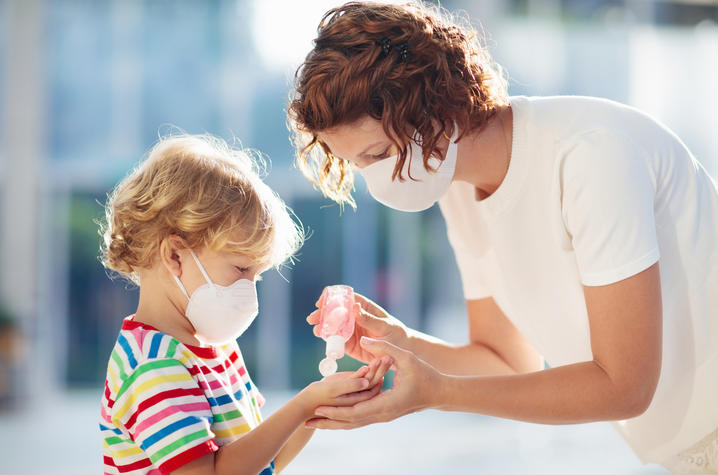Why it is Important to Teach Your Kids to Wear a Face Mask

The University of Kentucky Public Relations & Strategic Communications Office provides a weekly health column available for use and reprint by news media. This week's column is by Jenna Cook and Ashley Rapske, child life specialists in Kentucky Children’s Hospital.
LEXINGTON, Ky. (June 8, 2020) — It can be a difficult adjustment for kids to wear a face mask. Many kids may not be used to seeing others wearing a mask in public, let alone having to wear one themselves. Here are some tips for kids over the age of 2 that may help:
- Kids will react differently to wearing a mask depending on their age. Start by explaining what a face mask is, why we need it and when we need to wear it. Use developmentally appropriate language, be honest, and use simple words. You can say "a face mask helps to keep us safe and healthy by stopping germs from getting into our body when you cough, sneeze, talk, or breathe that can make you or someone else sick."
- Allow your child to ask questions about wearing a face mask. Ask your child what they know about the coronavirus and wearing a mask to assess their understanding and what they might be fearful of. Talk about other things we already do that also help stop germs and keep us healthy such as washing your hands, covering your mouth when you cough and social distancing.
- Model wearing a face mask. This will help to normalize the mask and familiarize the child with what a mask looks like when put on the face. Remind your child you can still see people’s eyes and they are smiling underneath the mask. Talk about how they can still talk, play and have fun while wearing a mask.
- Teach your child how to put on and take off the mask. Allow your child to look at itself in the mirror when wearing a mask. Practice wearing the mask at home around the house first before going out in public.
- Explain that wearing a face mask is a rule right now and make it apart of your child's routine. Talk about how other people will also be wearing face masks. Show your child pictures of other kids, friends, or family members wearing a mask.
- Kids love to play and learn best through play. Put a mask on your child's stuffed animal, action figure, or doll. Pretend to be a mask wearing doctor, animal, or super hero. Draw, color, or write a story about people wearing face masks.
- Kids do well with choices and feeling as if they are in control. Let your child help pick out their favorite color, pattern, or character that will be on their face mask. You can also use fabric markers, fabric paint, or stickers to allow your child to decorate and personalize their mask.
- It may take time, patience, and practice as your child adjusts to the changes of wearing a mask. Accept and comfort the reactions your child may have to wearing a mask. Provide positive encouragement, emotional support, and lots of praise when your child successfully wears their mask.
- Ask your child what the hardest thing about wearing a mask is. Validate their feelings, provide active listening, and allow them to ask questions. Share your own feelings about also needing to wear a mask
- The face mask may bother the back of your child's ears. An easy solution for this is attaching 2 buttons to a hat, head band, or ribbon. Put the mask straps over the buttons rather than over the ears. A pipe cleaner also works well to hold the mask on the back of the head.
- Invite your child to engage in fun and normal play activities. This will help your child express their feelings, reduce stress, learn, support developmental growth, and better cope with change.
As the state’s flagship, land-grant institution, the University of Kentucky exists to advance the Commonwealth. We do that by preparing the next generation of leaders — placing students at the heart of everything we do — and transforming the lives of Kentuckians through education, research and creative work, service and health care. We pride ourselves on being a catalyst for breakthroughs and a force for healing, a place where ingenuity unfolds. It's all made possible by our people — visionaries, disruptors and pioneers — who make up 200 academic programs, a $476.5 million research and development enterprise and a world-class medical center, all on one campus.




